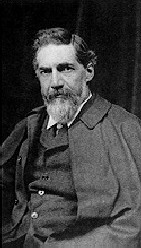
William Matthew Flinders Petrie (1853-1942) kam erstmals 1880 nach Ägypten, als er siebenundzwanzig Jahre alt war. Angeregt von den Theorien von Piazzi Smyth, die auf den Maßen der Pyramiden beruhten, wollte er deren Wahrheit anhand genauer Messungen beweisen. Seine Beobachtungen führten jedoch zum entgegengesetzten Schluß. Dieser Schlag war der Anfang von Petries Erfolg als Archäologe. Das Buch, das er über seine Forschungen schrieb, brachte ihm einen Ruf ein, anhand dessen es ihm gelang, den kurz zuvor gegründeten Egypt Exploration Fund zu überreden, ihm den Auftrag zu einer Ausgrabung zu erteilen.
Er kehrte 1883 nach Ägypten zurück, und nach zehn Jahren, in denen er an verschiedenen Orten gegraben hatte, entschied Petrie, sich auf die früheste Phase der ägyptischen Geschichte zu konzentrieren. Er war entschlossen, zu zeigen, daß die Menschen, die den Anstoß für die Entwicklung der ägyptischen Zivilisation gegeben hatten, aus Punt gekommen waren, und 1893 begann er auf dem Westufer des Nil gegenüber von Koptos, in der Nähe von Naqada, nach Spuren des Ursprungs dieser Menschen zu suchen. Petries ursprüngliche Hypothese über die Leute aus Punt konnte nicht aufrechterhalten werden, aber er entdeckte einen riesigen Friedhof, in dem die Toten in fötaler Stellung und unmumifiziert bestattet worden waren, was noch nie zuvor in Ägypten gefunden worden war. Obwohl Petrie anfangs eine Datierung in die 1. Zwischenzeit erwog, erkannte er bald, daß die 1. Dynastie oder die Prädynastische Zeit sehr viel wahrscheinlicher waren. Später fand Petrie ähnliche Friedhöfe in dem Gebiet zwischen Dendera und Abydos.
Zu Petries Zeit konzenrierten sich Ausgrabungen auf das Sammeln von möglichst vielen Objekten für Museen und Privatsammler, wobei der Konservierung der Ausgrabungsstätten oder der Aufzeichnung von Daten keinerlei Beachtung geschenkt wurde. Petrie jedoch war vom Beginn seiner Laufbahn an davon überzeugt, daß jedes Detail für die Rekonstruktion des Lebens im alten Ägypten von Bedeutung war. Seine sorgfältigen Methoden der Ausgrabung und Katalogisierung waren neu in der Ägyptologie und wurden bald von anderen befolgt. Durch ein gewissenhaftes Studium der Fundobjekte, in der Hauptsache Keramik, und ihre chronologische Anordnung entwickelte Petrie auch eine Methode zur Datierung der Prädynastischen Zeit, die über Jahrzehnte in Gebrauch blieb.